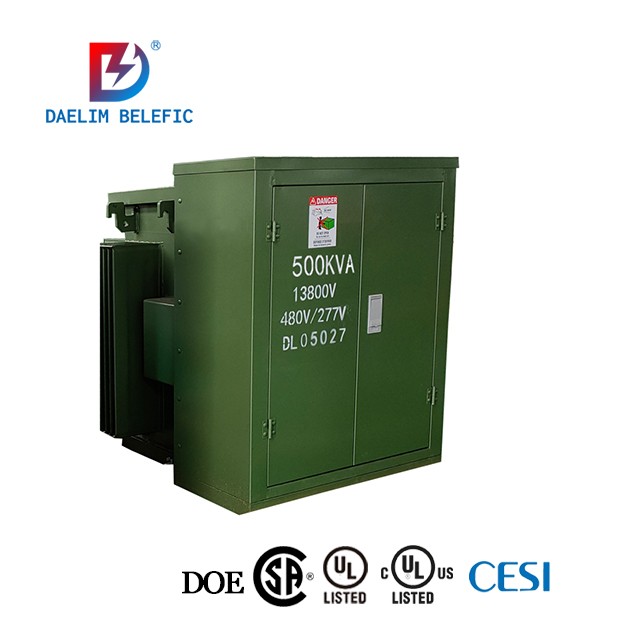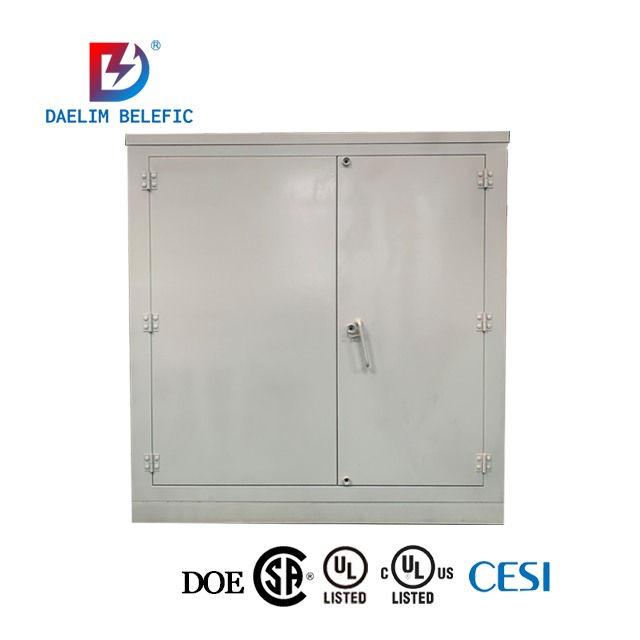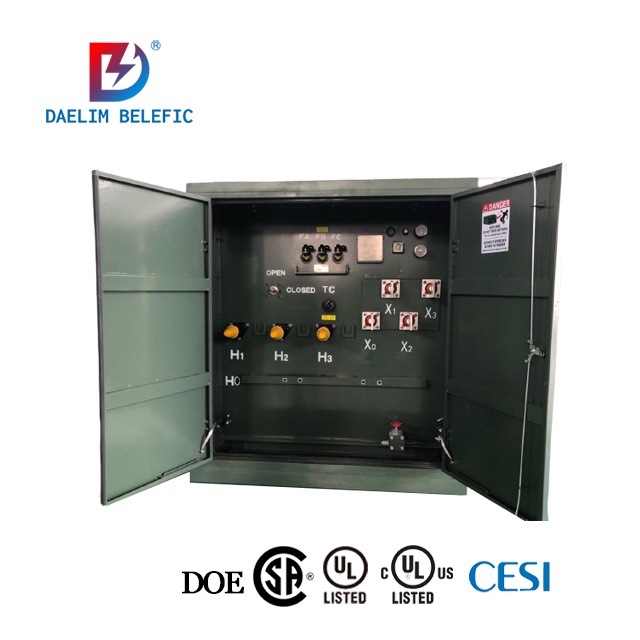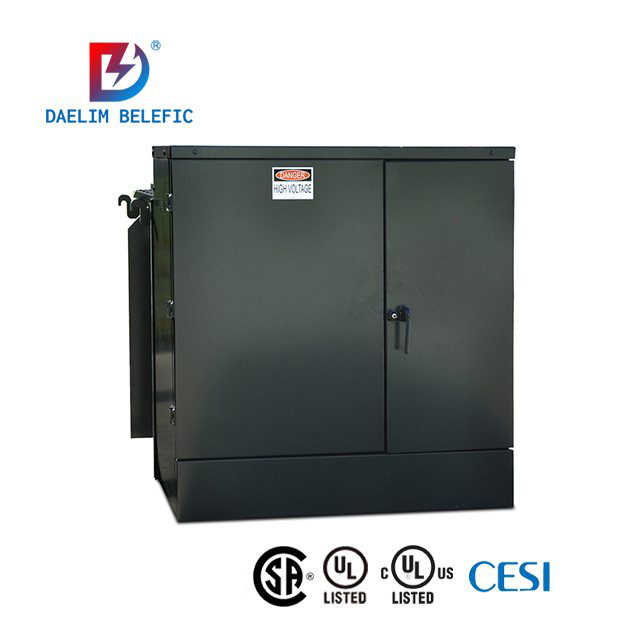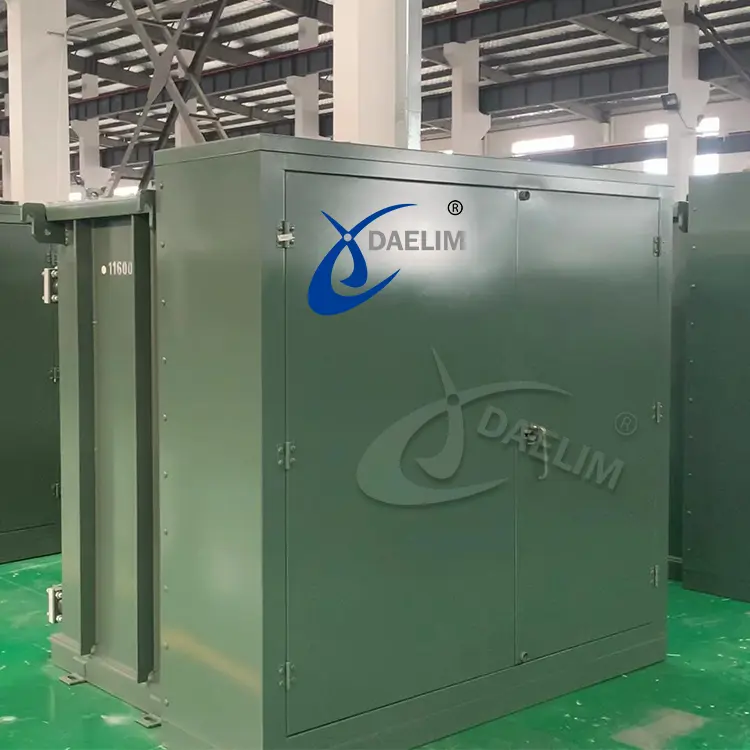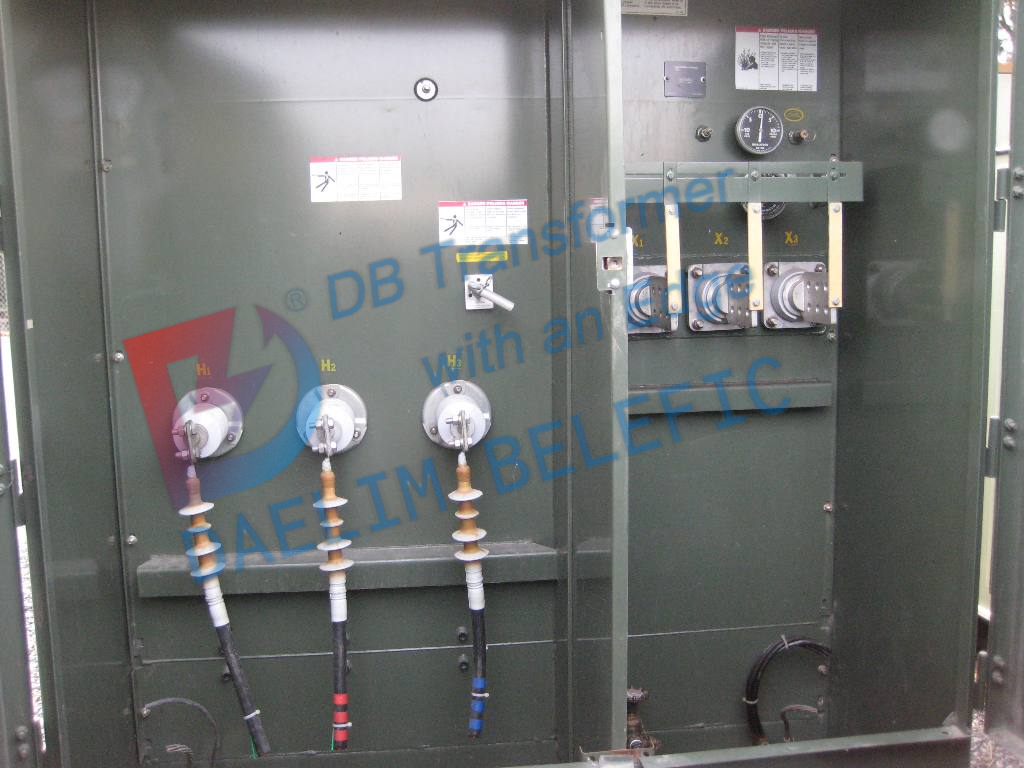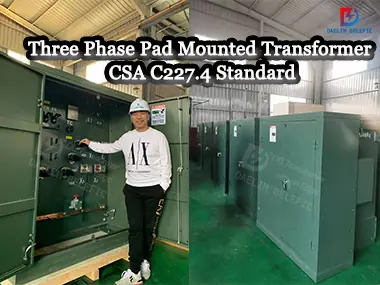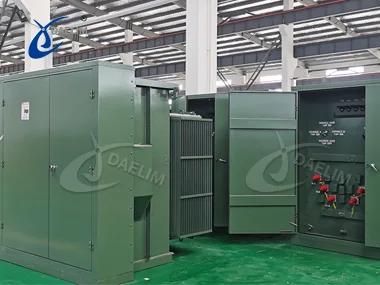Three Phase Live Front Pad Mounted Transformers Under CSA C227.5
When you're looking at purchasing a transformer, specifically a Three Phase Live Front Pad Mounted one, it's essential to know what kind of standards and precautions they fall under.
The Canadian Standards Association (CSA) has created an excellent set of standards for the industry. These standards are widely known as CSA C227.5. These standards ensure that your products will be safe and reliable when used in the field.
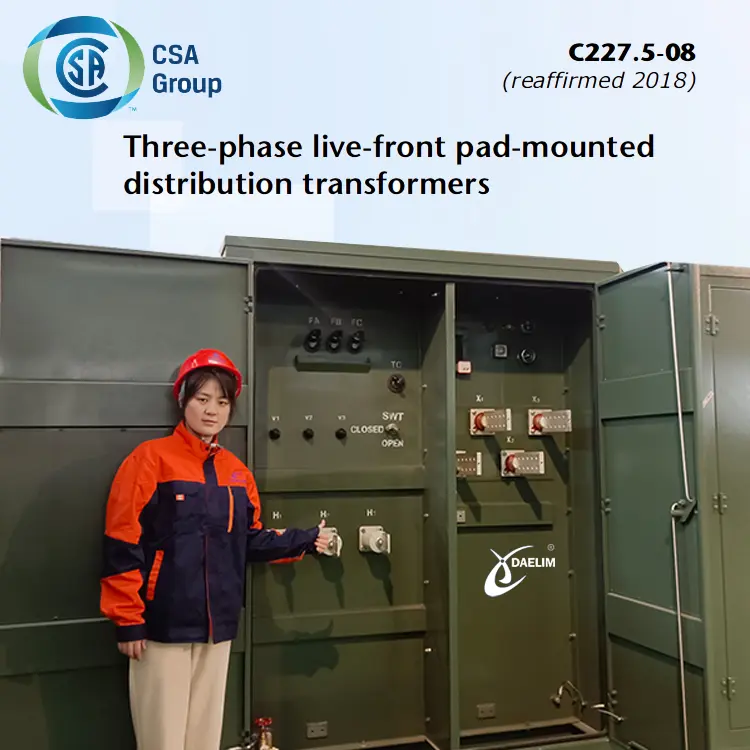
In this post, we will have a closer look at the CSA's C227.5 Live Front Pad Mounted Three Phase Transformers standard and procedures.
We will discover how the Canadian Standards Association established this set of parameters. We will also discuss how three-phase transformers are widely designed and distributed.
With this guide, we will know how it aligns with Canada's electrical system.
What Organization is CSA?
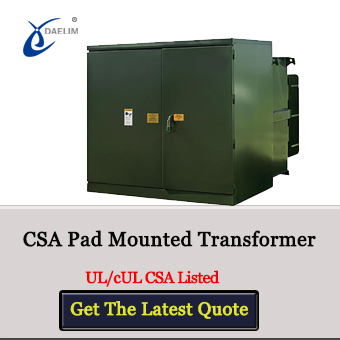 Canadian Standards Association (CSA) is a non-profit trade organization that represents business entities, governments, consumers, and stakeholders in Canada and across the globe.
Canadian Standards Association (CSA) is a non-profit trade organization that represents business entities, governments, consumers, and stakeholders in Canada and across the globe.
CSA is widely recognized as a standards development group by the SCC. It is a government department that has been in operation since March 1989 and is in charge of all things relating to civil space in Canada.
They set the bar for Standards Development and Testing, Inspection, and Certification in North America, the United Kingdom, Europe, and Asia.
The Canadian Standards Association (CSA) is also split into two divisions:
Non-Profit Standards and Development
When it comes to studying, creating, teaching, and advocating for standards, CSA is greatly unrivaled.
Economic relations, security, safety, and well-being in Canada will benefit from the technical standards established.
Testing, Certification, and Inspection
Manufacturers may show that their goods meet international safety, environmental, and operational performance standards with the help of CSA Group's global commercial subsidiaries.
This offers specialized testing, inspection, and certification services.
CSA has extensive experience conducting testing following important industry standards, such as C227.5 for three-phase live-front pad-mounted distribution transformers.
Learn More About 3 Phase Pad Mounted Transformer
What Kind of Transformer Standard is CSA C227.5?
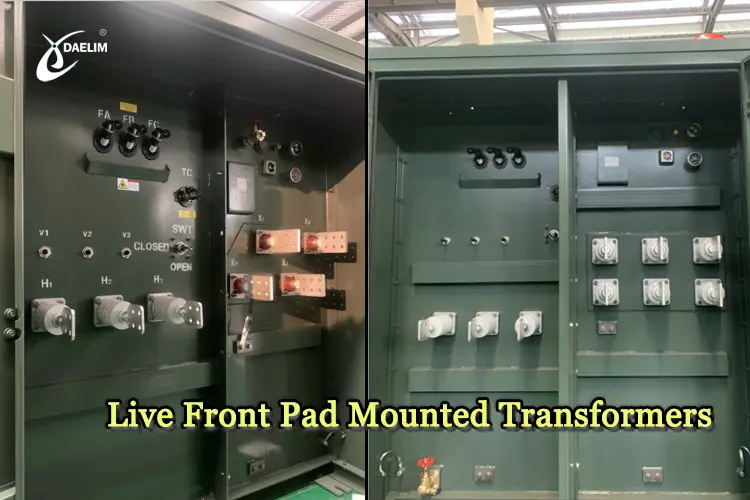
The Canadian Standards Association's C227.5 requirement establishes the parameters for three-phase live front transformers, which have the following:
(a) a transformer and a chamber for cables, either of which may be removable
(b) a standard rating of 75 kVA up to 3000 kVA; specifically drafted for use on three-phase underground distribution devices
(c) installation of outdoor mounting pads without the necessary extra housing
To the extent that a piece of machinery has a respective three-phase live mount transformer or a section of single-phase transformers, those components are outside the scope of this Standard.
Since distribution transformers are widely used by people, CSA Standard C227. 5 specifies rules for their design and manufacture that aim to protect those who will be greatly exposed to them.
These include distribution transformer users and the general public.
Reading On: CSA C227.4 Standard
What Is A Three Phase Live Front Pad Transformers?
A live-front pad-mounted three-phase transformer electricity generates three coils in a magnetic field.
In addition, a live front pad three phase transformer is a utility transformer that is pad-mounted rather than grounded beneath the surface.
The transformers in this design consist of metal enclosures with insulation and rest on tiny concrete feet.
Due to their flexibility, these three-phase power transformers have different applications in a variety of categories.
In several industries, you can find them in machinery that generates a huge amount of power, such as motor drives.
Three-phase transformers are always designed to convert the voltage of three-phase power grids.
You may enjoy: Pad Mounted Transformer
Structured Design
- Power Capacity: From 75kVA to 3000kVA, three-phase
- Initial Voltage: 34.5kV or Higher
- Source of Secondary Voltage: 120Y/208 Loop or Radial Feed
- Constructed to buyer requirements and in compliance with CSA C227.5 and C802.1 Energy Efficiency Standards
Standard Accessories and Features
- Bolted tank cap prevents tampering.
- Each section is greatly separated by a voltage barrier, either high or low.
- Engraved aluminum nameplate
- Pressure Reduction Mechanism
- Connectors for High and Low Voltage Systems
- Sampling port drain valve
- Indicator for liquids of various levels
- Thermometer
- Ground Bar
- Jacking Steps
- Exterior Finish conforming to ANSI C57.12.28
Get It Now: IEEE C57 Standard
What Are The Electrical Characteristics Of A Live Front Pad-Mounted Transformer under CSA C227.5?
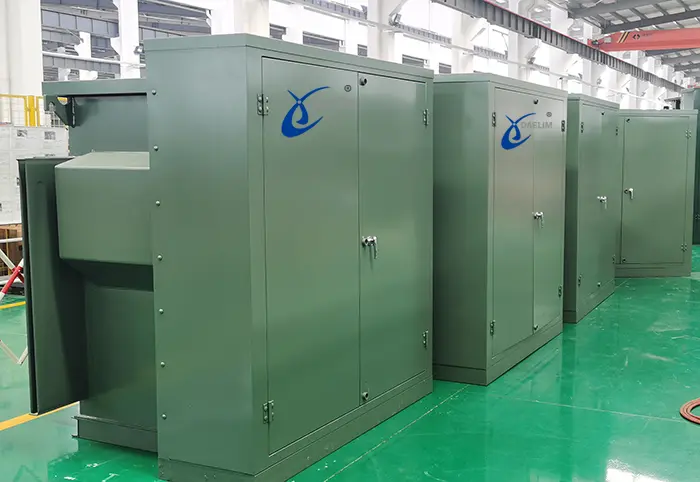
In an electrical device, all of the fluid flow is widely considered to connect to the secondary winding. 100% of the time. Losses like hysteresis loss and electrical resistance loss don't happen in an ideal live front pad transformer.
Let's look at what the CSA standards say about the electrical properties of live front pad-mounted transformers.
kVA Ratings
The rated kVA power at the minimum voltage shall be 75, 150, 225, and 300; up to 500 between 3000.
Angular Displacement
CAN/CSA-C2.1 says that the angular displacement of transformers must be either 0° or 30°.
Core Grounding
The core(s) must be stable.
Standard High-Voltage Winding Connection
Transformers with different ways to connect the windings so they can handle more than one voltage rating must be always shipped with connections for the highest voltage rating unless the buyer says otherwise.
Grady Connected Transformers
Transformers that connect with GrdY-GrdY must have a four- or five-legged core design.
Operating Voltage Range
Transformers must be able to work continuously at rated kV•A at 10% above or 5% below the rated voltage of the connected tap, but not necessarily within the performance limits set by this Standard.
Audible Sound
These transformers must be compatible so that the sound level measured by ANSI/IEEE C57.12.90 can be heard.
You May Enjoy: CSA C227.3 Standard
What Are The Mechanical Features Of A Live Front Transformer under CSA C227.5?
Transformers are fundamental components of the electrical system that has significant usage in every power distribution system because of their vital functions.
So, in accordance with CSA C227.5, let's have a look at its mechanical specs.
Dimensions
The kVA, primary voltage, and high-voltage cable termination will determine the dimensions used (Width and MM: 1030, 1280, 1480, 1730)
Transformer Tank
The tank must be able to resist a pressure of at least 50 kPa without leaking. Thus must be permanently distorted by more than .25% along the diagonal section.
Transformer Base
750 kVA units or above require a transformer base for rolling in four directions. These should have 2 parallel and 2 perpendiculars to the side of each transformer.
Drain Valves, Liquid Indicators, and Pressure Devices
The pressure-relief device must have an opening pressure between 30 and 50 kPa and a minimum flow rate of 16 L/s at a gauge pressure of 100 kPa.
Transformer Core Assembly
The entire transformer unit needs to be hermetically sealed so that the oil within can be anywhere from -40 degrees to +105 deg C without leaking out.
Off-Circuit Tap Changer And Voltage Selector Switches
When specified, off-circuit tap changers and dual-voltage selector switches shall be of the lever handle type and made of corrosion-resistant material.
Transformer Accessories
Transformer accessories like replaceable fuses are always meant to apply after the transformer is in place. It must be always placed in a way that allows them to use hotline tools.
Liquid Insulant
The liquid insulation must be mineral oil that meets the requirements of CAN/CSA-C50. When the transformer is successfully shipped, the strength must be a minimum of 40 kV when tested under ASTM D 1816.
Arrangement
The transformer and cable entry section should be set up correctly so the high-voltage and low-voltage spaces are both launched on the transformer tank.
Metal Barrier
The metal wall that separates the high-voltage and low-voltage areas must have two holes for 1/2-inch bolts in the bottom section, no more than 100 mm from the bottom edge.
Doors
The doors must be set up so that a single padlock can be utilized to lock the low-voltage compartment door.
Locking Provisions
The cable entrance compartment must meet IEEE C57.12.28's requirements for integrity.
Try for free: The Ultimate Guide to Dead Front Transformers
What Are The Bushings, Terminals, And Grounding Features Of A Live Front Transformer under CSA C227.5?
A bushing is an empty electrical insulator used in electric power to safely route an electrical conductor through a conducting barrier like the casing of a transformer without making electrical contact with the barrier.
Let's take a look at the live front transformer's grounding and bushing terminals.
High-voltage Bushings
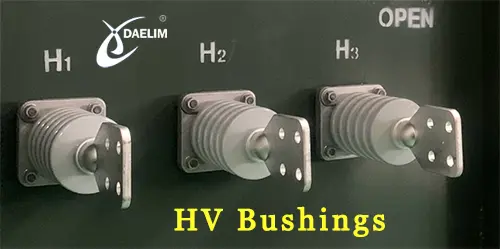
Unless otherwise specified by the buyer, high-voltage terminals must conform to the standards for terminals and bushings outlined in CAN/CSA-C2.1.
Low-voltage Bushing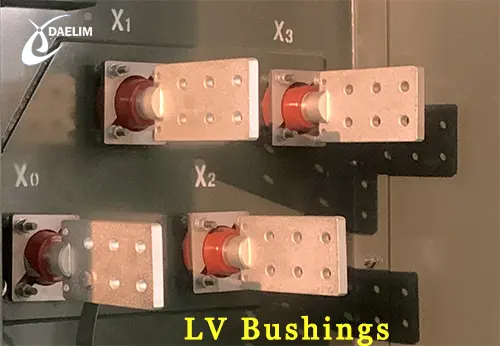
These should consist of the following:
a) copper or aluminum (adaptable with rust and resistant to metal plating)
For stud-type bushings; terminals should consist of
a) plated copper suitable with copper itself or aluminum connectors.
Grounding Spade Terminals
A minimum of two grounding spade terminals weld to the tank wall above sill height. Both are necessary, however, one must be on the high voltage side and the other on the low.
Grounding Assembly
A robust copper bus, at least 40 mm in width and 6 mm in thickness, connecting the high-voltage and low-voltage areas is necessary as part of the grounding assembly.
Bonding Of Bolted Tank Cover
When properly fastened, the transformer cover must (a) be electrically linked to the tank through a copper strap utilizing copper or bronze hardware of at least 1/4 in; and (b) be out of public view.
Keep Reading: CSA C802 Standard
How does CSA Test A Three-Phase Live-Front Pad-Mounted Transformers?
Testing of transformers must be always done in compliance with CAN/CSA-C2.1.
In particular, CSA Standard implements the distribution of transformers, with those greatly intended for the usage of significant services.
Additional requirements of transformers should satisfy and follow this Standard. These rulings are widely imposed by electrical inspection regulatory agencies.
- Unless otherwise mentioned, this type of Standard applies to all kinds of distribution transformers. The exceptions are those covered by CSA C2.2, C227.3, and C227.4.
- CSA C227.5 standard covers single and three-phase 1000 kV liquid distribution transformers. It should have an insulation class of 34.5 (kV) or less that operate at 60 Hz.
- A. or below is necessary for 3000 kV single-phase. B. Three-phase performance is below A-level.
- All of the kV values, mechanical features, and testing plans outlined in this Standard fall within the scope of that range. Energy production, loading capacity, decibels, and radio frequency interference, as well as energy products assessed by CAN/CSA-C802.
- CSA C227.5 standard is also applicable to other sets of transformers that provide protection. At the same time, prohibits any safety equipment.
However, this Standard does not apply to autotransformers, testing transformers, dry-type transformers, welding transformers, furnace transformers, rectifier transformers, network transformers, subway transformers, special-purpose transformers, and step-voltage regulators.
What Are The Quality Of Work And Finish Of A Live Front Transformer under CSA C227.5?
Every part of a live-mounted transformer, including the tank, cable entry chamber, and radiator, must be free of any sharp angles or edges.
Additionally, the exterior finishes must meet the standards set out in IEEE C57.12.28. As an alternative to blue, the standard should be green (Munsell notation 9 GY 1.5/26) or extremely light grey.
It must meet the welding requirements of the CSA W59. The fabricator needs to be in line with CSA W47.1 and have compliance approval from the Canadian Welding Bureau.
The following tolerances are also one of the requirements in addition to those mentioned in this Standard:
(a) 5 mm for proportions less than 300 mm
(b) 10 mm for proportions 300 mm and above
If there are any additional information plates, they must be securely attached so that they cannot be easily removed without rendering the device insecure.
In addition, every transformer with an off-circuit switch that may operate from the outside must also feature a warning label.
A self-adhesive tag must be always applied to the top left corner of one exterior side of the transformer. The tag includes the following data:
(a) the manufacturer's brand name or logo
(b) a stock code number provided by the buyer
(c) a serial number
You May Enjoy: Single Phase Pad Mounted Transformer
Ending Notes
As we've learned, we dived deep into the electrical characteristics of CSA C227.5, the standard for distribution transformer design.
Daelim has been working very hard to expand into the Canadian market for many years. They have proven to acquire CUL certifications across all its transformers.
DAELIM team is very equipped when it comes to their transformer's technical requirements as stipulated by the CSA.
In the end, it is always important to follow standard rules and regulations to present a quality product to consumers.
Related Products
Related Article
What is a Live Front 25kv Pad Mounted and Substation Transformer Specification ?
"Live" and "Dead" are terms commonly applied to oil-filled pad-mounted transformers. "Live front" refers to the exposed end of the cable and terminals. For example, the cable can be stripped at the end and inserted into the eyebolt terminal of the porcelain bushing.
Pad Mounted Transformer CSA C227.4 National Standard of Canada
As a transformer buyer and manufacturer, you should be familiar with the local transformer design requirements and standards. This article tells the Canadian country's transformer standard CSA C227.4, the pad-mounted transformer below 3000kva.
The Ultimate Guide to Dead Front Transformers
Daelim Transformer is a professional manufacturer specializing in ANSI/IEEE and CSA Std pad-mounted transformers. Their professional technical team is capable of designing both dead front and live front transformers that fully adhere to ANSI/IEEE, DOE, CSA, and other international standards. Daelim Transformer holds various transformer test reports from SGS, CESI, IEEEC 57, IEC60076, CSA C227.4,CSA C227.5, as well as UL and cUL certificates.


